In the 30 years since the launch of the Hubble Space Telescope, this iconic feat of engineering has been revealing the wonders of the Universe while building up a library of some of the most shining sights in the cosmos. We've taken a look through the archives and collected the best images you've probably not seen before.
Veil nebula
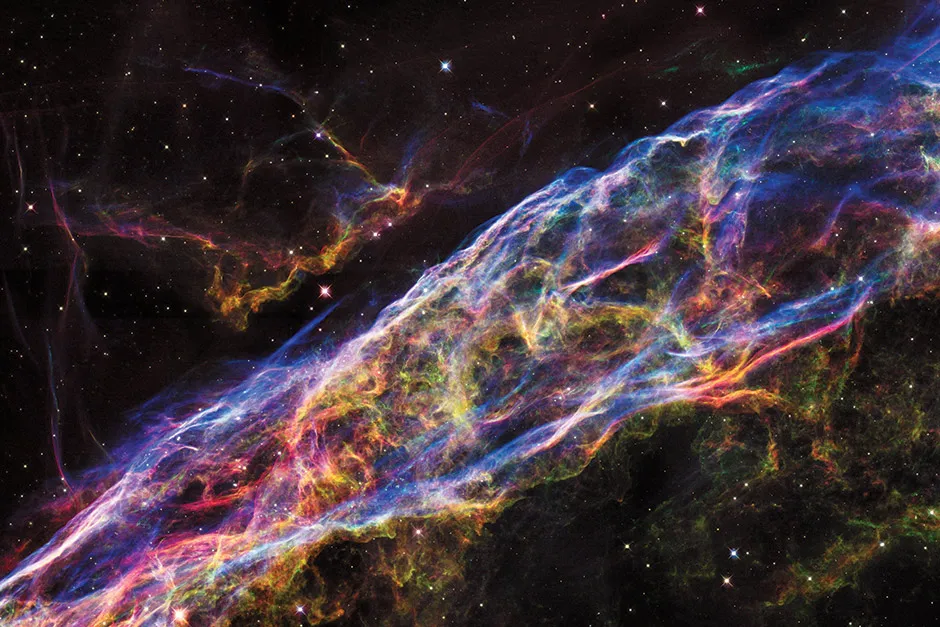
Stars that reach a violent end and explode in a supernova will often leave behind a scar on the sky – a brightly coloured cloud of gas, known as a supernova remnant. The Veil Nebula is one such remnant, stretching out over 110 light-years.
Hubble took a look at the Veil Nebula back in 1997, only to return in 2015 when this image was taken. In the intervening years, astronauts had visited Hubble using the Space Shuttle and upgraded the main widefield and planetary camera for a second time. The improved resolution revealed the nebula’s delicate gas filaments in a new level of detail.
The original supernova appears to have exploded just 8,000 years ago (practically yesterday in astronomy terms) and is still expanding. In the 18 years between the first and second images, the cloud has grown in size. Astronomers have been able to pick out these changes, helping to understand how such nebulae evolve.
Pismis 24
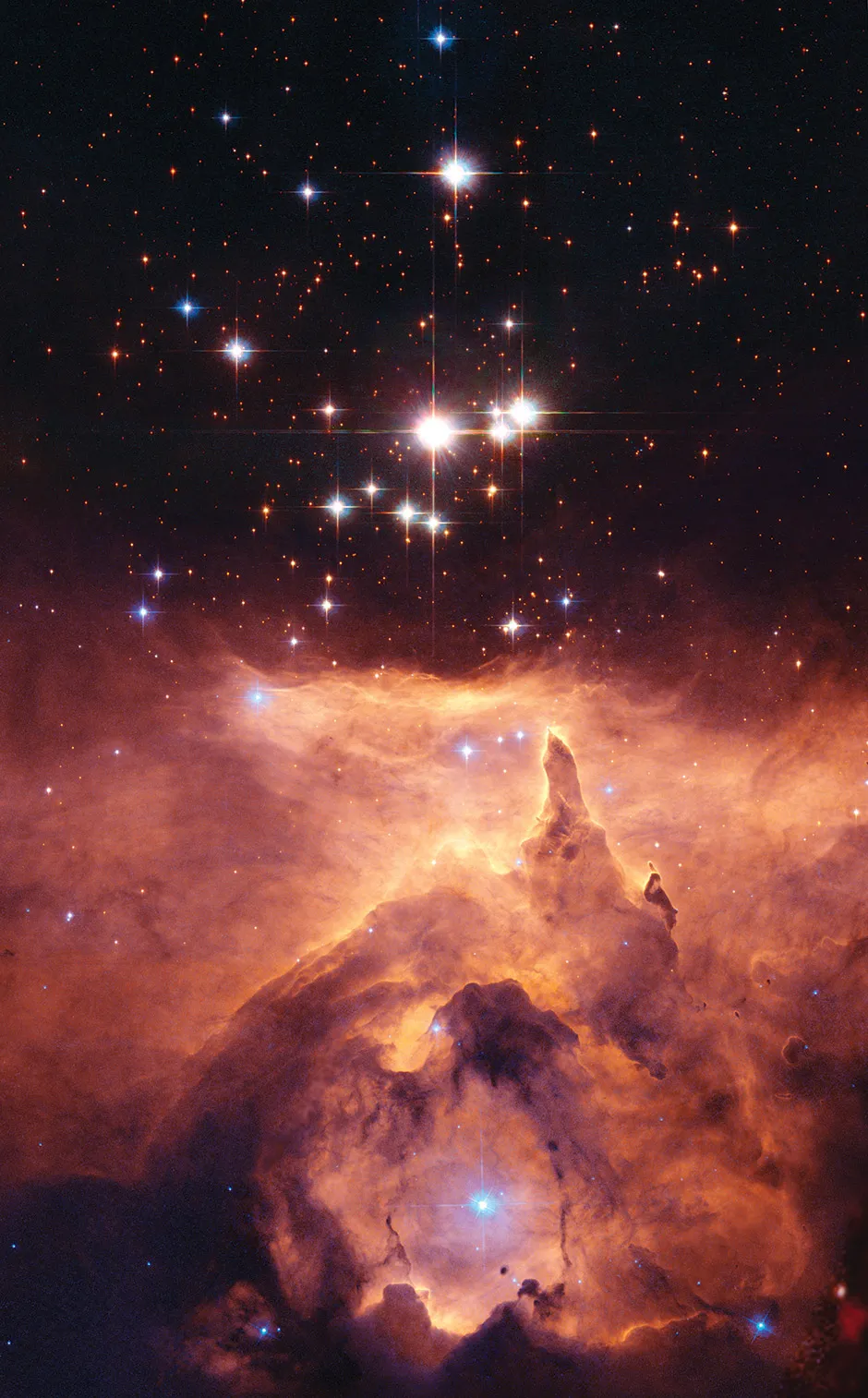
Pismis 24 is just one cluster of stars in a large nebula, NGC 6357. The entire region is home to many young and growing stars, aka protostars. These grow up in thick dust clouds, which hide them from telescopes that can only view the Universe at visible wavelengths.
“Hubble can be used for UV, visible and some infrared observations. These panchromatic capabilities are incredibly useful for studying everything from Solar System activity to distant galaxies,” explains Jennifer Wiseman, senior project scientist for the Hubble Space Telescope.
Here, Hubble has been able to pierce through the dust, creating a window into where infant stars are born. It was thought the mass of the cluster’s brightest star, Pismis 24-1, was around 300 times that of the Sun, making it the heaviest in the Galaxy. However, Hubble puts it at a far more modest 100 solar masses.
Bubble nebula
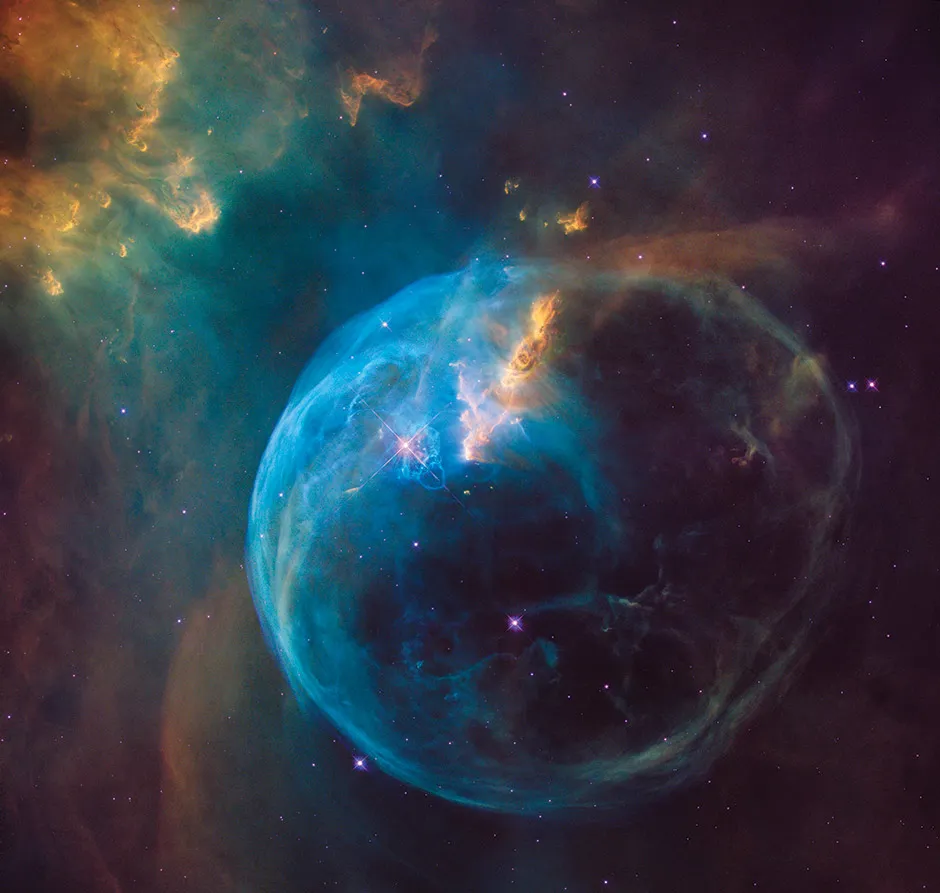
Also known as NGC 7635, the Bubble Nebula was created by a petulant star, around 45 times the mass of our Sun, throwing out its gas, or stellar wind.
The gas is travelling at around 6.5 million kilometres per hour, and as the resulting cloud expands out, it slams into the surrounding interstellar medium – this is the gas which fills the space between the stars – creating a shock wave. The advancing wave causes the regions it passes through to heat up and glow, producing the bright bubble that gives this nebula its name.
The bubble is lopsided, however, with the star located in the top left. The interstellar medium in this region is much cooler, and therefore denser, making it harder for the gas to expand in that direction.
Herbig-Haro jet
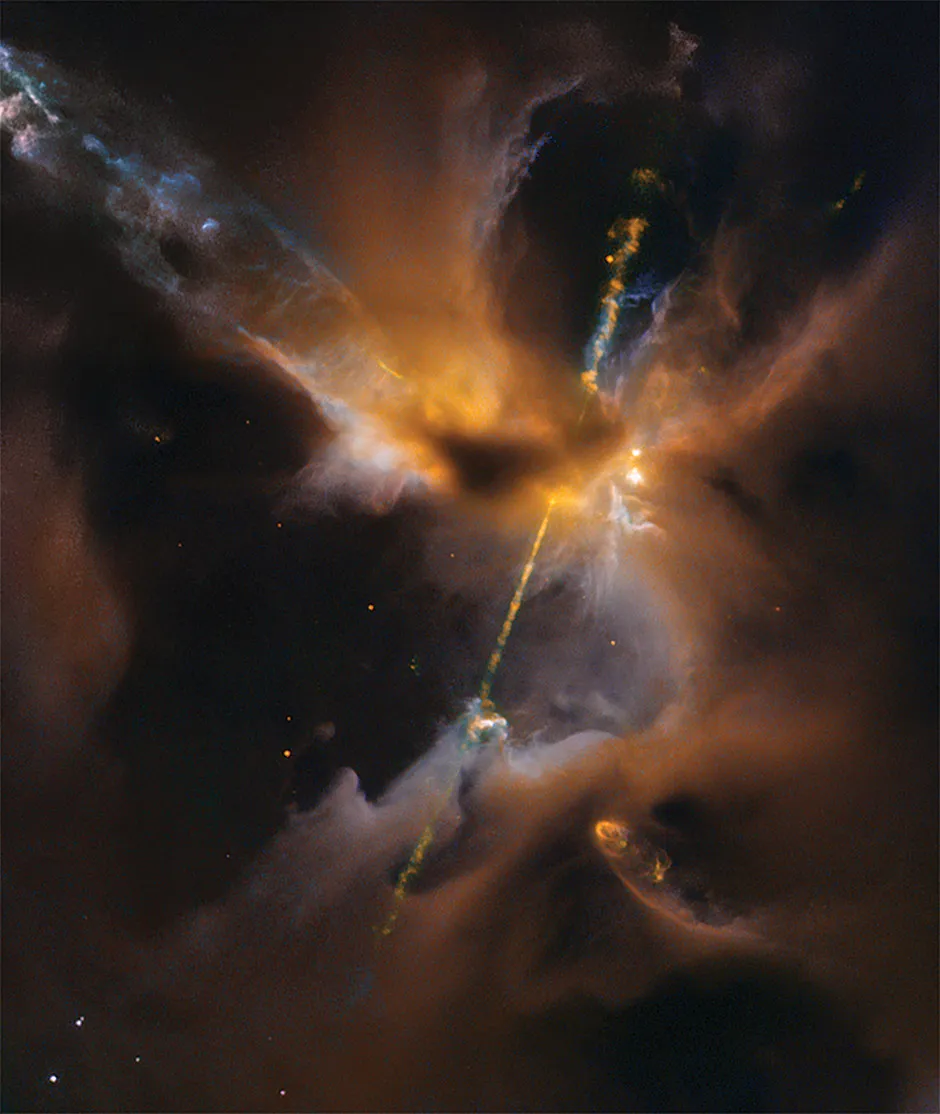
Here, we see a Herbig-Haro jet, which spurts out of some newborn stars. After a star forms, there is usually a disk of gas and dust left around it. Complex interactions between this disk and the star’s magnetic field mean that some of the gas ends up being thrown out at incredibly high speeds.
The shock wave of the gas ripping through the interstellar medium creates this brightly glowing jet, as seen here.
Not only has Hubble’s high precision been able to reveal these jets in greater detail than ever before, we’ve been able to study them as they grow. As the jet moves further out, it hits new knots of gas, causing them to brightly flare up, then fade away over timescales of a few years. This has given astronomers a unique view of the usually invisible interstellar medium.
“Thirty years is not a lot of time in the astronomical realm,” says Jennifer Lotz, director of the Gemini Observatory. “But we now have movies that show ejecta from massive stars. This opens up new ways to understand these phenomena, beyond just an instantaneous snapshot of time.”
NGC 5033
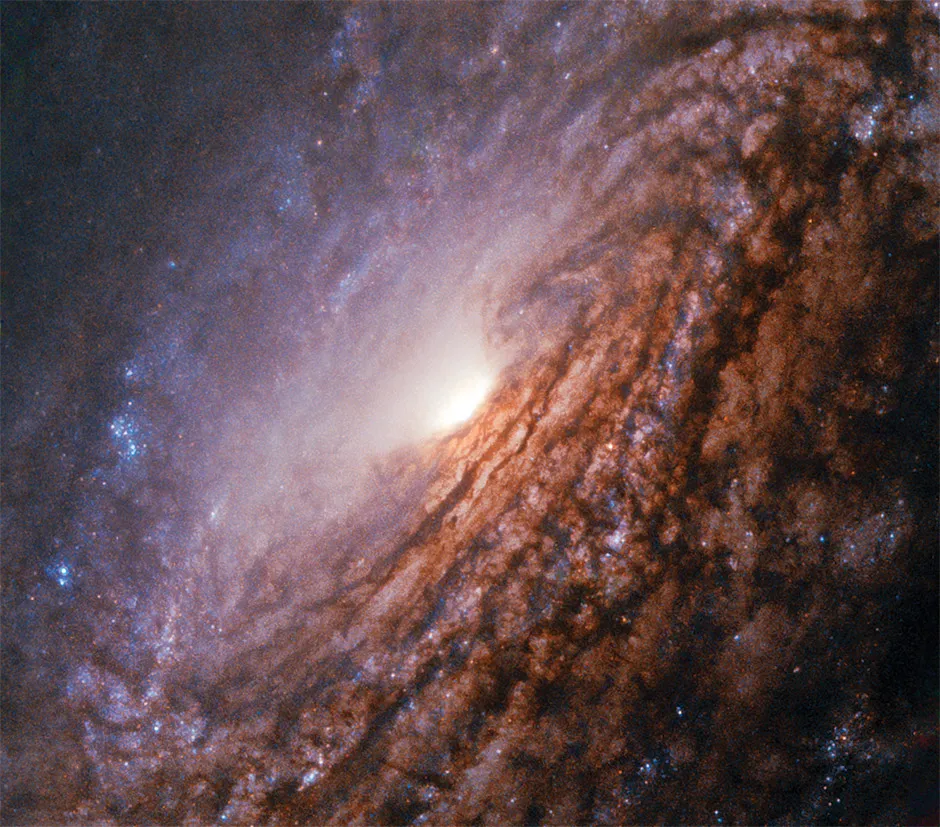
Spiral galaxy NGC 5033 is much like our own. It’s around the same size, about 100,000 light-years across, and at its core is a supermassive black hole, weighing anywhere between 10 million and a few billion solar masses.
Unlike the Milky Way, however, NGC 5033’s black hole isn’t docile. Instead, it’s surrounded by a swirling disk of gas and dust, moving so rapidly that it superheats. This makes it glow brightly, forming what’s known as an active galactic nucleus.
Read more about black holes:
- Wormholes: Could we travel through a black hole into another galaxy?
- The incredible story of how we discovered black holes
Over the years, Hubble has found hundreds of supermassive black holes by looking at the motion of dust in the centres of galaxies. If the material is moving rapidly, there must be a black hole holding it in place or it would speed off into the rest of the galaxy.
“Hubble observations of the centres of massive galaxies showed that supermassive black holes lived in the centres of almost every galaxy,” says Lotz. “We now believe that supermassive black holes play a critical role in shaping galaxies.”
Fomalhaut
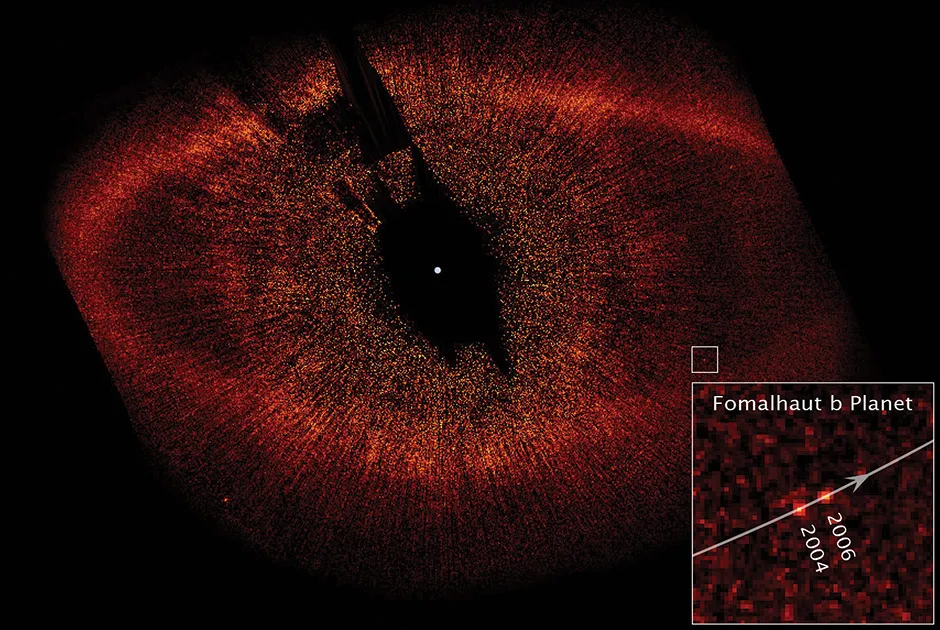
Before Hubble launched, the only planets we knew about were those in our Solar System. Today, we know of thousands of exoplanets orbiting other stars.
“Hubble has been right at the forefront of studying exoplanets,” says Wiseman. “It’s not a great instrument for finding them – the field of view is too small and it only has a small window for searching the vast sky – but what it can be used to do, is carry out intimately detailed follow-up observations.”
One rare case where Hubble did find a planet was around the star Fomalhaut. The star is surrounded by a ring of dust stretching out to around 20 billion kilometres – that’s three times further out than Pluto.
Such rings are usually created by planets shepherding dust into a specific orbit. Hoping to track down this world, Hubble repeatedly took images of the system over a period of several years. Comparing the images, astronomers found a bright dot slowly moving around the disk. It was a planet, and the first one ever directly imaged in visible light.
Gravitational lensing

Galaxy clusters are one of the most massive objects in the Universe. They are so heavy that they warp the fabric of space-time, to the point that light gets bent as it passes by. Under the right conditions, this bending can act as a lens, magnifying galaxies located billions of light-years behind them, an effect known as gravitational lensing.
In the left-hand picture above, you can see several bright blue galaxies which have been lensed, though the process has distorted them into curved arc shapes. Such images are vital in tracking one of the most mysterious substances in the Universe, dark matter.
Read more about dark matter:
- Wild ideas in science: Dark matter might be under our feet
- Desperately seeking dark matter: the search for 95 per cent of the Universe
“Most of the matter in a cluster is dark matter,” explains Wiseman. “We don’t know what dark matter is, but through Hubble’s observations of lensing we can tell how it’s distributed and the history of how dark matter evolved throughout the history of the Universe.”
After studying the pattern of distorted galaxies, astronomers have created a map of dark matter within this cluster, shown in the right-hand image, in blue.
Galaxies colliding
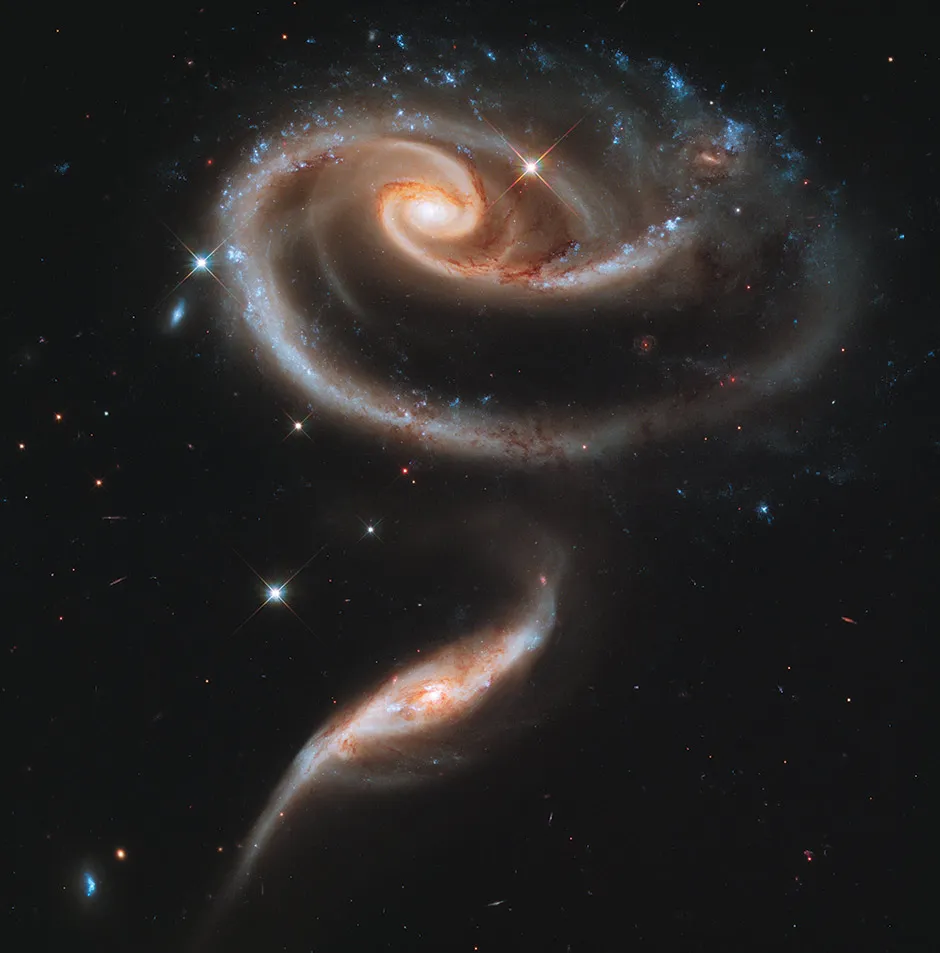
Two galaxies colliding into each other sounds like it should be hazardous, if not fatal, to the objects involved. In reality, it is the main way these stellar collectives grow and evolve. When they crash together, or even just pass close by, the resulting chaos stirs up the gas within them, creating knots of material which go on to form stellar nurseries.
Here, we see two separate galaxies that have recently passed close enough that they’ve pulled each other’s spiral arms out of shape. Hubble’s ultraviolet cameras have been able to pick out regions where hot, young stars are busily forming. These are the bright blue clumps clustered around the galaxies’ distorted arms, where the interaction would create the most turbulence.
Hubble’s unparalleled sharpness and ability to see in the ultraviolet is one of the key ways in which it differs from its Earth-bound counterparts. Our atmosphere soaks up most of the ultraviolet radiation that arrives at our planet, and so Hubble’s view above the atmosphere gives us a unique view of the Universe at these wavelengths of light.
- This article first appeared in issue 348 of BBC Science Focus Magazine
- All images © NASA/Hubble Space Telescope Heritage Team
From BBC Sky at Night Magazine:
- Hubble at 30: three decades of the famous space telescope
- 'How we serviced Hubble': Mike Massimino reveals all
- How Hubble’s successor the James Webb Space Telescope will observe the Universe
- Astronaut Kathy Sullivan on launching the famous space telescope
- What was wrong with Hubble’s mirror, and how was it fixed?
- Radio Astronomy Podcast: 30 years of the incredible space telescope
- How did the space telescope come about?
- What Hubble's launch meant to me, as an amateur astronomer
- How Hubble changed our view of the Universe
- Why did astronauts service the Hubble Space Telescope?
- How the Hubble Space Telescope is used to study exoplanets
- A history of the Hubble Space Telescope

